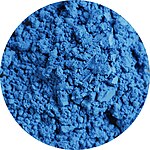
Cerulean: A Hybrid Assembly using High Throughput Short and Long Reads
This paper by Son Pham (author of Sibelia) and colleagues looks like the right approach and is exactly what we need today. (h/t: ?@lexnederbragt)
Problems with the existing approach:
1. Error correction of PacBio takes too long.
Recent e orts (PacbioToCA [1], LSC [14]) have focused on mapping short
reads to the erroneous long reads to correct the long reads using aligners like
NovoAlign [15] and GMAP [16] which can allow large edit distance for the mapping. These corrected long reads are then used to generate an assembly with
signi cantly longer contigs. However, such mapping from all short reads to all
long reads with large edit-distance is computationally expensive and requires a
large running time even for small bacterial datasets.
For fish genome, PacBioToCa was going to take 7 months !
2. Alignment approach misses short PacBios.
An alternative approach is to rst assemble the high coverage short read
dataset to produce high quality contigs and use long reads for sca olding. Previous tools that use this approach include AHA sca older [17] and ALLPATHSLG [18]. However, these approaches are specialized to perform hybrid assembly
in the presence additional libraries including Roche 454 reads for AHA sca older
and jumping libraries of mate-pair reads for ALLPATHS-LG. Following this approach, a hybrid assembler will essentially take as input: the assembler should
nd the correct traversal of genome on the graph using the support information
from the mapping of long reads.
While the alignments of long reads on the complete genome can be easily identi ed using BLASR [19], alignments to shorter contigs can be spurious.
Solution:
Genome assembly using high throughput data with short reads, arguably, remains an unresolvable task in repetitive genomes, since when the length of a repeat exceeds the read length, it becomes difficult to unambiguously connect the flanking regions. The emergence of third generation sequencing (Pacific Biosciences) with long reads enables the opportunity to resolve complicated repeats that could not be resolved by the short read data. However, these long reads have high error rate and it is an uphill task to assemble the genome without using additional high quality short reads. Recently, Koren et al. 2012 proposed an approach to use high quality short reads data to correct these long reads and, thus, make the assembly from long reads possible. However, due to the large size of both dataset (short and long reads), error-correction of these long reads requires excessively high computational resources, even on small bacterial genomes. In this work, instead of error correction of long reads, we first assemble the short reads and later map these long reads on the assembly graph to resolve repeats.
Contribution: We present a hybrid assembly approach that is both computationally effective and produces high quality assemblies. Our algorithm first operates with a simplified version of the assembly graph consisting only of long contigs and gradually improves the assembly by adding smaller contigs in each iteration. In contrast to the state-of-the-art long reads error correction technique, which requires high computational resources and long running time on a supercomputer even for bacterial genome datasets, our software can produce comparable assembly using only a standard desktop in a short running time.
The code can be downloaded from here (thanks Danny, @lex). Google does not talk to me properly any more and gave me this link for Cerulean assembler.
Cerulean is written in python and relies on outputs from other heavy duty C-codes like ABySS and BLASR. We also note that the algorithm was tried on bacterial genome, not large genomes. The following discussion is helpful, if you want to try large genomes.
Cerulean has a very low resource usage and high accuracy of assembled sca olds. This makes a very strong case for scaling this approach to larger genomes. The algorithm in its current state focuses on making decisions based on very simple building blocks one at a time. This makes it possible for us to make low risk decisions towards a high accuracy assembly for simple bacterial genomes. However, when analyzing datasets from larger complex genome, we have no prior knowledge of the structure of the repeats and the layout of the contigs generated by short read assemblers. So there are cases where the sca olding algorithm may not be able to distinguish between a true adjacency signal and a false adjacency signal. In most cases, this will simply stop the algorithm from extending a scaffold due to branching. However, we cannot conclusively rule out the possibility of producing other side e ects for every decision made by the algorithm. We also need to acknowledge the fact that we are currently dealing with small bacterial genomes for which we can easily obtain high and more or less uniform coverage for short reads. So far we rely completely on the short read assembler to generate the initial contigs. However, for larger genomes, variable coverage caused due to sequencing bias combined with decisions made by the short read assembler can cause misassembled contigs to start with. In this case, the sca ffolder will bene t from not assuming the assembled contigs as ground truth, but actually testing for misassemblies by the short read assembler.
